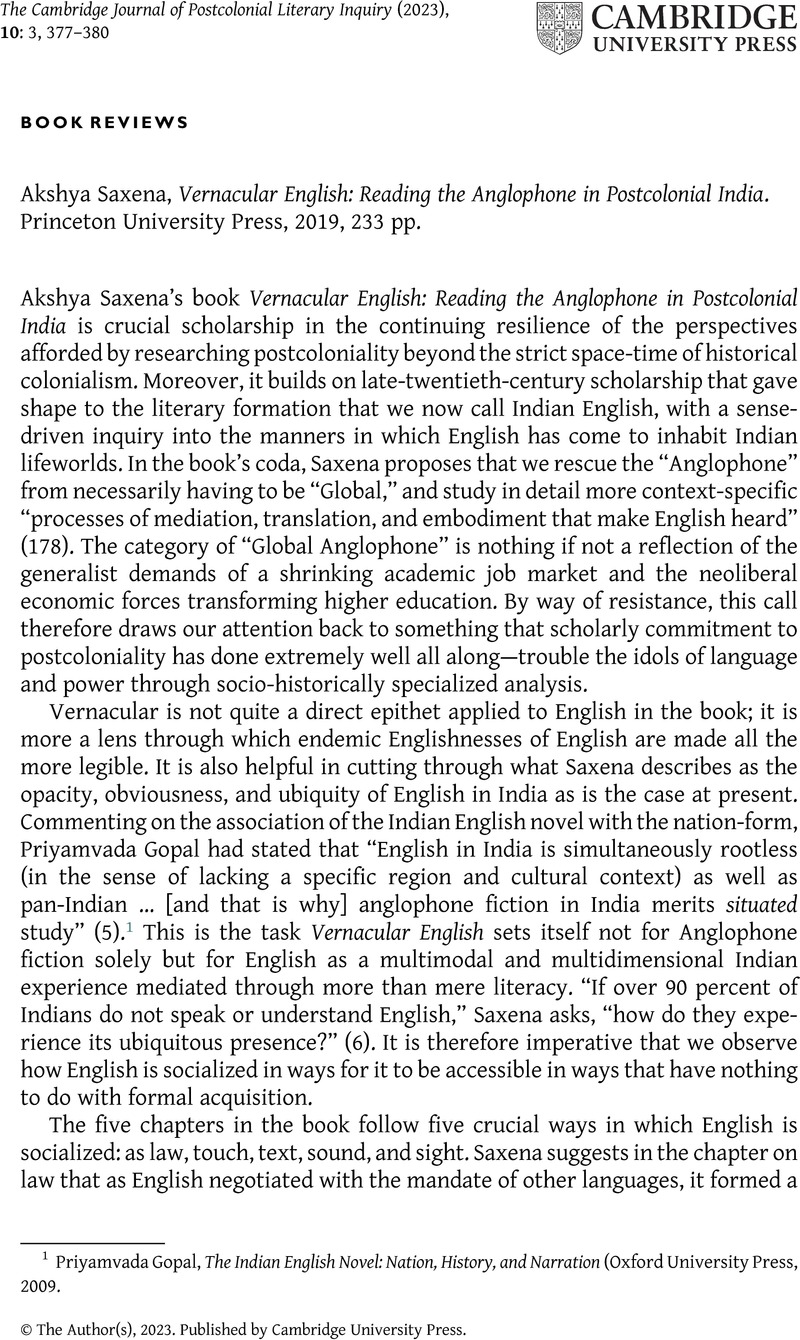No CrossRef data available.
Article contents
Akshya Saxena, Vernacular English: Reading the Anglophone in Postcolonial India. Princeton University Press, 2019, 233 pp.
Review products
Akshya Saxena, Vernacular English: Reading the Anglophone in Postcolonial India. Princeton University Press, 2019, 233 pp.
Published online by Cambridge University Press: 24 July 2023
Abstract
An abstract is not available for this content so a preview has been provided. Please use the Get access link above for information on how to access this content.

- Type
- Book Review
- Information
- Cambridge Journal of Postcolonial Literary Inquiry , Volume 10 , Issue 3 , September 2023 , pp. 377 - 378
- Copyright
- © The Author(s), 2023. Published by Cambridge University Press
References
1 Priyamvada Gopal, The Indian English Novel: Nation, History, and Narration (Oxford University Press, 2009.



